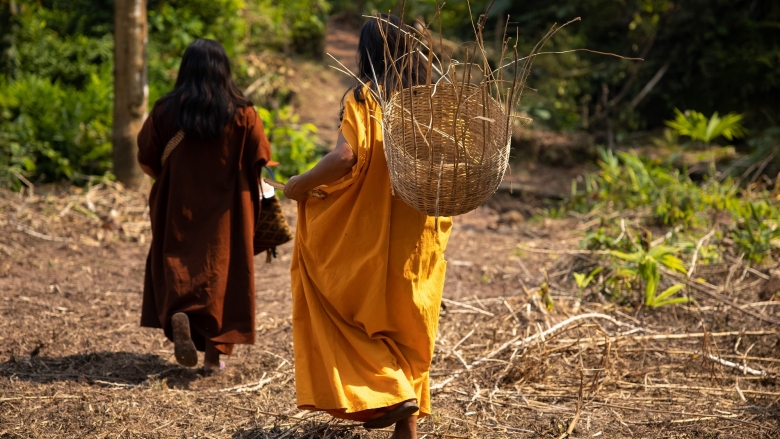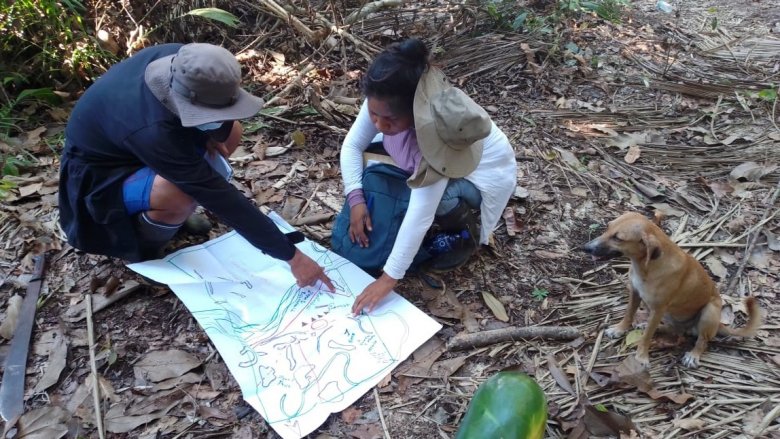The history of the Amazon region includes large, complex civilizations, which most likely shaped the region’s vast forests and resources. The Indigenous Peoples of the Amazon region have transformed their environment without depleting it through sustainable practices supported by profound knowledge of their landscape; knowledge that survives and is being transmitted through the generations.
Today, the region is home to over 400 groups of Indigenous Peoples, representing a multitude of over 300 different languages, diverse cultures, and governance structures. Legally recognized indigenous territories comprise around 28% of the Amazon region, and these territories represent nearly half of the intact forests in the basin. In 2021, research led by the University of Sheffield found that between 2010–2018 across the tropical forests in the Americas, Asia, and Africa, indigenous lands had one-fifth less deforestation on average compared to non-protected areas, demonstrating the effective stewardship of their lands, which also applies to the Amazon.
The International Day of the World’s Indigenous Peoples is celebrated on August 9th to honor and recognize the achievements and contributions of indigenous populations to improve issues such as environmental protection and raise awareness about their rights—at a time when they face increasing threats to their land from illegal extractive activities, agriculture, and large-scale infrastructure development, among other threats. The recent COVID-19 pandemic also took a large toll on Indigenous Peoples in the region exposing large disparities in access to basic services, such as safe water, food security, and access to health services.
At the same time, Indigenous Peoples have never been better organized to address these threats and deliver much-needed solutions. Despite the growing pressures faced by indigenous communities, they have continued to successfully steward and gain recognition of their rights over their land and resources. Currently, most Amazonian governments recognize these rights in their constitution allowing Indigenous Peoples to better determine how to manage their assets and to do so in accordance with their traditional views of respecting nature.
For the World Bank-led Amazon Sustainable Landscapes Program (ASL)—funded by the Global Environment Facility—it would not be possible to achieve its objective of improving integrated landscape management and ecosystem conservation in the Amazon without the collaboration, traditional knowledge, and active participation of Indigenous Peoples as key partners.
One of the ASL’s pillars focuses on the establishment and effective management of various types of area-based conservation measures, including indigenous territories. Each of the five national projects within the first phase of the ASL works with indigenous communities, and since the program’s approval in 2015, the program has supported the development of participatory governance tools with Indigenous Peoples in Brazil, Colombia, and Peru. These efforts will continue in the program’s second phase now starting with added projects in these countries plus Bolivia, Ecuador, Guyana, and Suriname.
The theme of this year’s International Day of the World’s Indigenous Peoples is The Role of Indigenous Women in the Preservation and Transmission of Traditional Knowledge, recognizing the role of indigenous women as the backbone of Indigenous Peoples’ communities and their crucial role in the preservation and transmission of traditional ancestral knowledge. Many indigenous women are also taking the lead in the defense of their territories and advocating for Indigenous Peoples’ collective rights worldwide.


